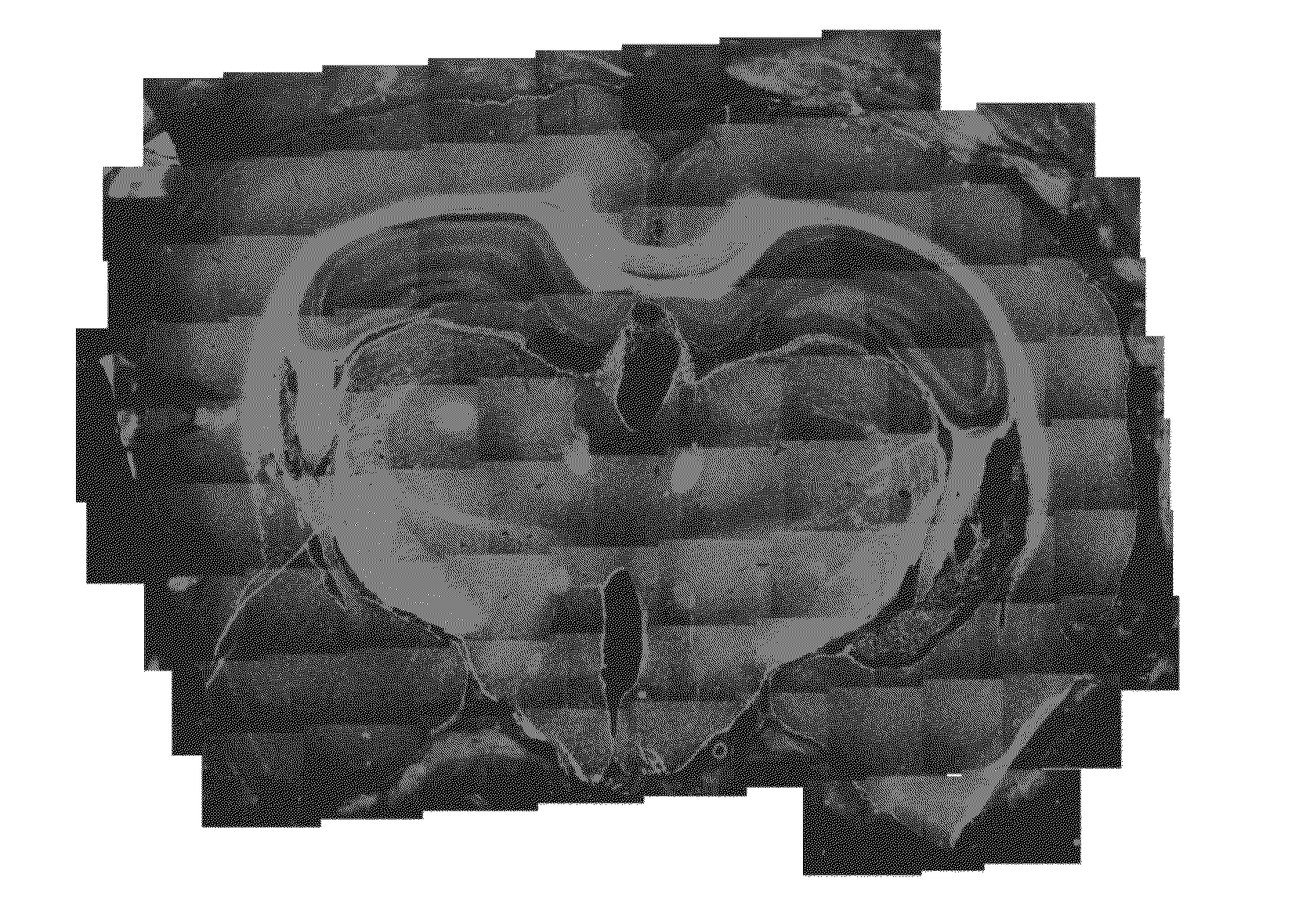NCAM-vase and neurodegeneration
a neurodegeneration and ncam-vase technology, applied in the field of ncam-vase and neurodegeneration, can solve the problems of ncam-vase being difficult to inhibit, stimulate tumour formation, and at least partially disappointing clinical improvement results obtained with some of the above-mentioned materials, so as to relieve the monolayer-mediated suppression of axon outgrowth and prevent axon regeneration
- Summary
- Abstract
- Description
- Claims
- Application Information
AI Technical Summary
Benefits of technology
Problems solved by technology
Method used
Image
Examples
example 1
Distribution of NCAM-VASE in the Central Nervous System
[0082]An affinity purified anti-VASE antibody was developed that is specific only for the VASE isoform of NCAM, and which can recognise NCAM-VASE expressed on the surface of cultured cells.
[0083]A peptide immunogen consisting of the VASE sequence (underlined), four flanking amino acids, and an N-terminal Cys (CSEEKASWTRPEKQETLDG), coupled to Blue Carrier Protein, was used to produce polyclonal rabbit antiserum. The peptide sequence was that previously used by (Hemperly et al., Exp Neurol, 1998, 154, 1-11) for the same purpose. The crude antiserum was affinity purified using a column containing NCAM-VASE covalently coupled to sepharose beads to isolate anti-VASE antibodies that recognised the sequence in its native form in the whole NCAM-VASE ectodomain. (The NCAM-VASE (with a C-terminal-Fc tag) was produced in mammalian CO7 cells transfected with a plasmid vector encoding NCAM-VASE-Fc. It was affinity purified from the culture m...
example 2
Specific Downregulation of Expression of NCAM-VASE
[0092]Use was made of fibroblast clones expressing human non-VASE NCAM (NCAM) or human VASE-containing NCAM (VASE), into which RNAi sequences could be delivered by vector to test the feasibility of targeting VASE specifically. Their effectiveness at down-regulating NCAM / VASE expression was monitored by immunocytochemistry and Western blot.
[0093]NCAM VASE and non-VASE transcripts are identical apart from the extra 30 bp VASE sequence. This restricts the RNAi target site to these 30 bp. The human VASE-specific sequence was scanned for suitable RNAi sequences, and two possible regions were identified (VASE 1 & VASE 2). In addition, the regions in common between NCAM and VASE were scanned for a suitable control RNAi sequence that would downregulate both NCAM and VASE (pan-NCAM). Target sequences were identified, as shown in FIG. 8:
VASE 1:AAGGCTTCGTGGACTCGACCA (human)VASE 2:AAGCAAGAGACTCTGGATGGG (human)Pan-NCAM:GAACGACGAGGCTGAGTAC (human)...
example 3
Neuronal Contact with VASE-Expressing Cells Prevents Axon Regeneration Stimulated by Soluble NCAM
[0099]It has previously been shown that soluble NCAM-Fc stimulates axon outgrowth over control monolayers as effectively as if it were expressed in the monolayer (Meiri et al, J. Neurosci, 1998, 18, 10429-10437). To test whether culture on VASE monolayers suppresses axon outgrowth in the presence of NCAM-Fc, PND4 rat cerebellar granule neurons were cultured on monolayers of 3T3 cells (control) or 3T3 cells stably expressing NCAM or NCAM-VASE overnight in the presence of increasing concentrations of soluble NCAM-Fc (NCAM ectodomain fused to Fc at the C-terminus) before being fixed and stained with a GAP-43 antibody for measurement of mean neurite length. On control monolayers, but not NCAM-VASE-expressing monolayers, soluble NCAM dose-dependently increased mean neurite length.
[0100]Axon length on control, NCAM- and NCAM-VASE-expressing monolayers in the absence and presence of increasing ...
PUM
| Property | Measurement | Unit |
|---|---|---|
| Composition | aaaaa | aaaaa |
| Solubility (mass) | aaaaa | aaaaa |
Abstract
Description
Claims
Application Information
 Login to view more
Login to view more - R&D Engineer
- R&D Manager
- IP Professional
- Industry Leading Data Capabilities
- Powerful AI technology
- Patent DNA Extraction
Browse by: Latest US Patents, China's latest patents, Technical Efficacy Thesaurus, Application Domain, Technology Topic.
© 2024 PatSnap. All rights reserved.Legal|Privacy policy|Modern Slavery Act Transparency Statement|Sitemap



